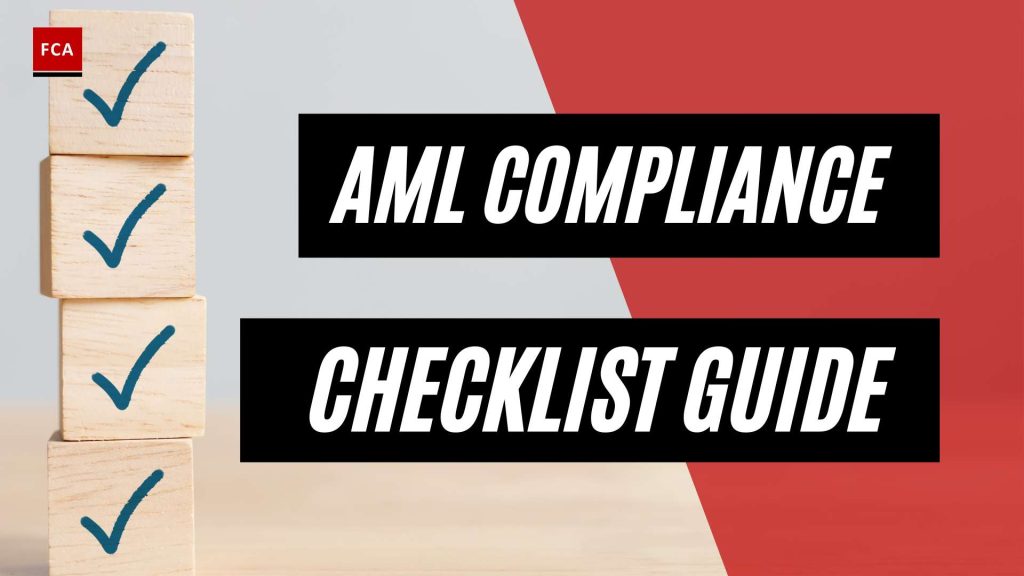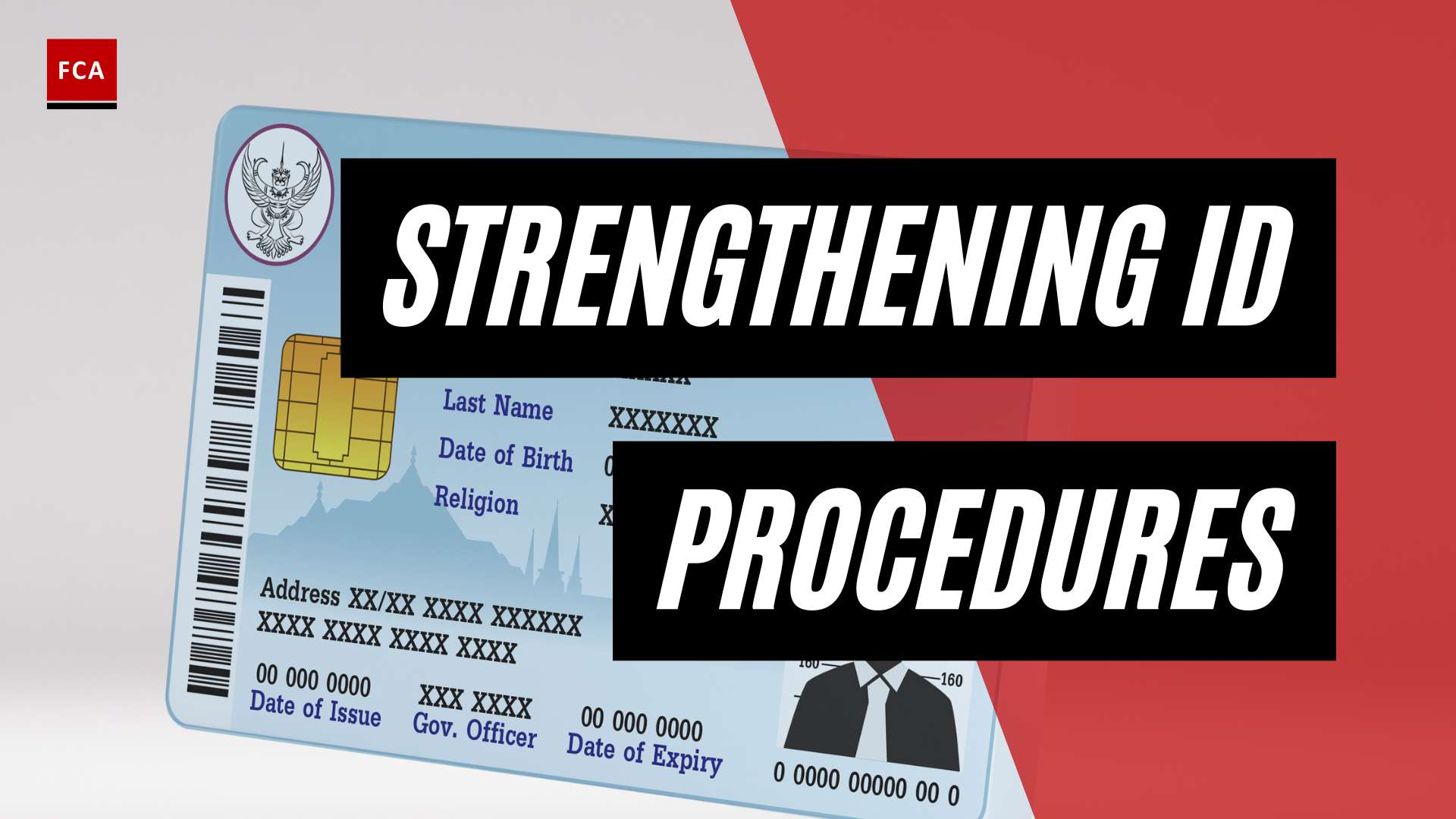Understanding AML Compliance
AML, or Anti-Money Laundering, compliance is a crucial aspect of financial institutions’ operations. It involves a set of procedures, laws, and regulations designed to prevent the practice of generating income through illegal actions. A comprehensive ‘aml compliance checklist’ serves as a guide for institutions to remain compliant with AML laws and regulations, protecting them from potential infractions that could lead to penalties or damage to their reputation.
Importance of AML Compliance
Compliance with AML regulations is not just a legal requirement, but also a critical step towards maintaining the integrity and reputation of financial institutions. Implementing an effective AML compliance checklist can not only prevent the negative consequences of non-compliance but also enhance the overall risk management framework of the institution, thereby safeguarding it from financial crimes and reputational damage (Financial Crime Academy).
Staying compliant with AML regulations also means adhering to a robust AML compliance program, having a qualified AML compliance officer, utilizing efficient AML compliance software, and providing continuous AML compliance training to employees. These elements are vital constituents of AML regulations and requirements, which when followed thoroughly, ensure the institution’s protection from financial crime.
Consequences of Non-Compliance
Non-compliance with AML regulations can carry severe penalties for financial institutions. These consequences can be both financial and non-financial. The financial consequences include hefty fines that can amount to millions of dollars. The non-financial consequences include loss of reputation, criminal charges, civil lawsuits, and regulatory enforcement actions that can lead to operational disruptions or even closure of the business.
Moreover, the consequences of non-compliance extend to civil penalties, confiscation of assets, and significant financial losses for the institution. These repercussions highlight the importance of a comprehensive AML compliance checklist, adherence to an AML compliance framework, and strict AML compliance controls in place.
Understanding the importance of AML compliance and the severe consequences of non-compliance is essential for every professional working in compliance, risk management, anti-money laundering, and anti-financial crime. It emphasizes the need for ongoing diligence, constant learning, and stringent adherence to the regulations laid out by financial authorities.
Elements of AML Compliance Checklist
The heart of an effective anti-money laundering (AML) strategy lies in a robust AML compliance checklist. It includes key elements such as Customer Due Diligence, Transaction Monitoring, Watchlist Screening, Risk Assessment, and Reporting and Recordkeeping. Implementing these elements ensures that organizations are equipped to detect, prevent, and report potential money laundering activities (Financial Crime Academy).
Customer Due Diligence
Customer Due Diligence (CDD) forms the foundation of any AML compliance checklist. It involves verifying the identity of new customers, understanding the nature and purpose of customer relationships, and conducting ongoing monitoring to detect and report suspicious activities (Veriphy). Enhanced due diligence measures should be applied to high-risk customers, such as politically exposed persons (PEPs) and those from jurisdictions with weak AML controls.
Transaction Monitoring
The next crucial component of an AML compliance checklist is transaction monitoring. This involves the continual monitoring and analysis of transactions to detect unusual patterns or discrepancies that might indicate money laundering activities (Veriphy). This ongoing surveillance is critical to identifying and reporting suspicious activities in a timely manner.
Watchlist Screening
Watchlist screening is an essential step in the AML compliance process. It involves screening customers against various watchlists, particularly government-issued lists of known terrorists, money launderers, and sanctioned individuals or entities (Veriphy). This screening process helps organizations to identify potential risks and take appropriate actions to mitigate them.
Risk Assessment
Risk assessment is a significant part of AML compliance. It involves identifying and evaluating the risks associated with an organization’s customers, transactions, and geographic locations. Understanding these risks enables organizations to implement appropriate control measures and develop an effective AML compliance framework.
Reporting and Recordkeeping
The final component of an AML compliance checklist is reporting and recordkeeping. This involves documenting all compliance efforts, from client identification records to transaction histories. It also includes reporting suspicious activities to relevant authorities. Effective recordkeeping ensures that organizations are able to demonstrate their compliance efforts during audits and that they have a solid foundation for their AML compliance program.
The implementation and maintenance of these elements in an AML compliance checklist are crucial for an organization’s efforts to combat money laundering. The role of an AML compliance officer is pivotal in ensuring these elements are effectively addressed. With the help of AML compliance software, these tasks can be automated and streamlined, improving the efficiency and effectiveness of the AML program. For further guidance, consider undertaking an AML compliance training to stay updated on the latest AML compliance requirements and regulations.
Implementing an AML Compliance Program
Implementing an effective AML compliance program is a critical component of an organization’s commitment to combating money laundering and financial crime. The process involves a series of steps, including the development of policies and procedures, application of customer due diligence, and ongoing monitoring practices.
Development of Policies and Procedures
Developing clear and concise written policies and procedures is vital for effective AML compliance. These documents should outline the institution’s commitment to AML compliance, define the responsibilities of employees, and guide the identification and reporting of suspicious activities. Regularly reviewing and updating these policies is essential to keep up with evolving regulatory requirements and emerging risks. You can find more information on developing an AML compliance policy on our website.
Application of Customer Due Diligence
Applying a robust Customer Due Diligence (CDD) process is a crucial aspect of an AML compliance program. This involves assessing customer risk profiles and monitoring for suspicious activities. Enhanced due diligence measures should be applied to high-risk customers, such as politically exposed persons (PEPs) and those from jurisdictions with weak AML controls (KYC2020). To understand more about the role of CDD in an AML compliance program, visit our dedicated section.
Ongoing Monitoring Practices
Establishing a system for ongoing monitoring of customer activities is another essential component of a successful AML compliance program. This involves implementing automated monitoring systems that can flag unusual patterns or activities. The monitoring process should be proactive, timely, and capable of detecting complex money laundering schemes.
Incorporating technology solutions can automate the AML compliance checklist process, reducing the burden on compliance teams and ensuring that all required tasks are completed accurately and on time. By leveraging technology, organizations can streamline compliance efforts, increase efficiency, and improve the overall effectiveness of their AML programs AML UAE). For more information on using technology for monitoring practices, explore our section on AML compliance software.
Implementing an AML compliance program requires careful planning, adequate resources, and a commitment to continuous improvement. By following the steps outlined above, organizations can create a robust compliance program that effectively mitigates the risk of money laundering and ensures compliance with AML regulations.
Role of Technology in AML Compliance
The ever-evolving financial landscape has necessitated the integration of advanced technology in Anti-Money Laundering (AML) compliance. These technologies offer numerous benefits, including the automation of compliance processes, real-time monitoring capabilities, and advanced data management and analytics.
Automation of Compliance Processes
One of the key roles of technology in AML compliance is the automation of various compliance tasks. Implementing technology solutions can automate the AML compliance checklist process, reducing the burden on compliance teams and ensuring that all required tasks are completed accurately and on time.
Artificial Intelligence (AI)-supported AML solutions, for instance, can aid organizations in complying with regulations and laws, thereby minimizing financial risks and ensuring compliance with AML and Know Your Customer (KYC) requirements. These solutions are becoming an integral part of a robust AML compliance program.
By leveraging technology, organizations can streamline compliance efforts, increase efficiency, and improve the overall effectiveness of their AML programs. For more information on the benefits of automation, check out our article on AML compliance software.
Real-Time Monitoring Capabilities
Technology solutions also bring the advantage of real-time monitoring capabilities. Transaction Monitoring Software, for example, is a legal requirement for businesses under AML obligations to counter money laundering and terrorist financing.
This proactive approach allows organizations to quickly identify and respond to suspicious behavior, reducing the risk of financial crimes. Real-time monitoring is a critical component of an effective AML compliance framework and is essential for the role of an AML compliance officer.
Data Management and Advanced Analytics
Finally, technology offers advanced analytics and data management capabilities that can strengthen AML compliance checklists by providing insights into patterns and trends associated with money laundering activities. For example, Adverse Media Screening enables businesses to identify negative news about individuals or entities, an integral part of KYC and AML processes.
By leveraging these tools, organizations can enhance the effectiveness of their AML programs, detect suspicious activities more efficiently, mitigate financial crime risks, and meet AML compliance requirements. To learn more about the role of data management and analytics in AML compliance, explore our article on AML compliance controls.
In conclusion, technology plays a crucial role in enhancing the effectiveness of AML compliance. By automating processes, enabling real-time monitoring, and providing advanced data management and analytics capabilities, technology empowers organizations to meet their AML obligations more efficiently and effectively.
Regulatory Requirements for AML Compliance
AML compliance is a crucial aspect in the financial industry in order to prevent money laundering and terrorist financing activities. Compliance with AML regulations is essential as non-compliance can lead to severe consequences, including hefty fines, damage to reputation, loss of business, and potential criminal charges against the institution or responsible individuals. This section will delve into the regulatory requirements for AML compliance, which encompasses compliance with AML laws, adherence to regulatory requirements, and utilization of compliance tools.
Compliance with AML Laws
Compliance with AML laws is a fundamental aspect of an AML compliance program. An AML compliance checklist should ideally be comprehensive, covering various aspects such as customer due diligence, transaction monitoring, risk assessment, record-keeping, reporting, and internal controls to mitigate the risk of money laundering and terrorist financing activities (Financial Crime Academy). Non-compliance with AML regulations can carry severe penalties for financial institutions, including fines that can amount to millions of dollars, loss of reputation, criminal charges, civil lawsuits, and regulatory enforcement actions that can lead to operational disruptions or even closure of the business (Financial Crime Academy).
Adherence to Regulatory Requirements
Adherence to regulatory requirements is essential to ensure that financial institutions remain in compliance with the evolving regulatory landscape, adapt to new money laundering schemes, and mitigate emerging risks effectively. Regularly updating and reviewing AML compliance requirements is crucial. AML compliance checklists are essential tools for ensuring that everything required by regulators is implemented, documented, and monitored. These checklists serve as a roadmap for compliance activities and help organizations stay on top of their AML obligations, including customer due diligence (CDD), enhanced due diligence (EDD), transaction monitoring, and reporting suspicious activities.
Utilization of Compliance Tools
In addition to the procedural and policy requirements, the use of compliance tools is an integral part of successful AML compliance. AML compliance checklists can help organizations meet regulatory requirements and demonstrate their commitment to combating financial crimes. Failing to adhere to AML regulations can result in severe consequences, including monetary penalties, reputational damage, and legal sanctions. Utilizing comprehensive AML compliance tools is crucial for ensuring compliance with evolving regulations and protecting the integrity of financial systems.
Technology offers advanced analytics and data management capabilities that can enhance an AML compliance checklist by providing insights into patterns and trends associated with money laundering activities. By leveraging these tools, organizations can enhance the effectiveness of their [AML compliance program](









